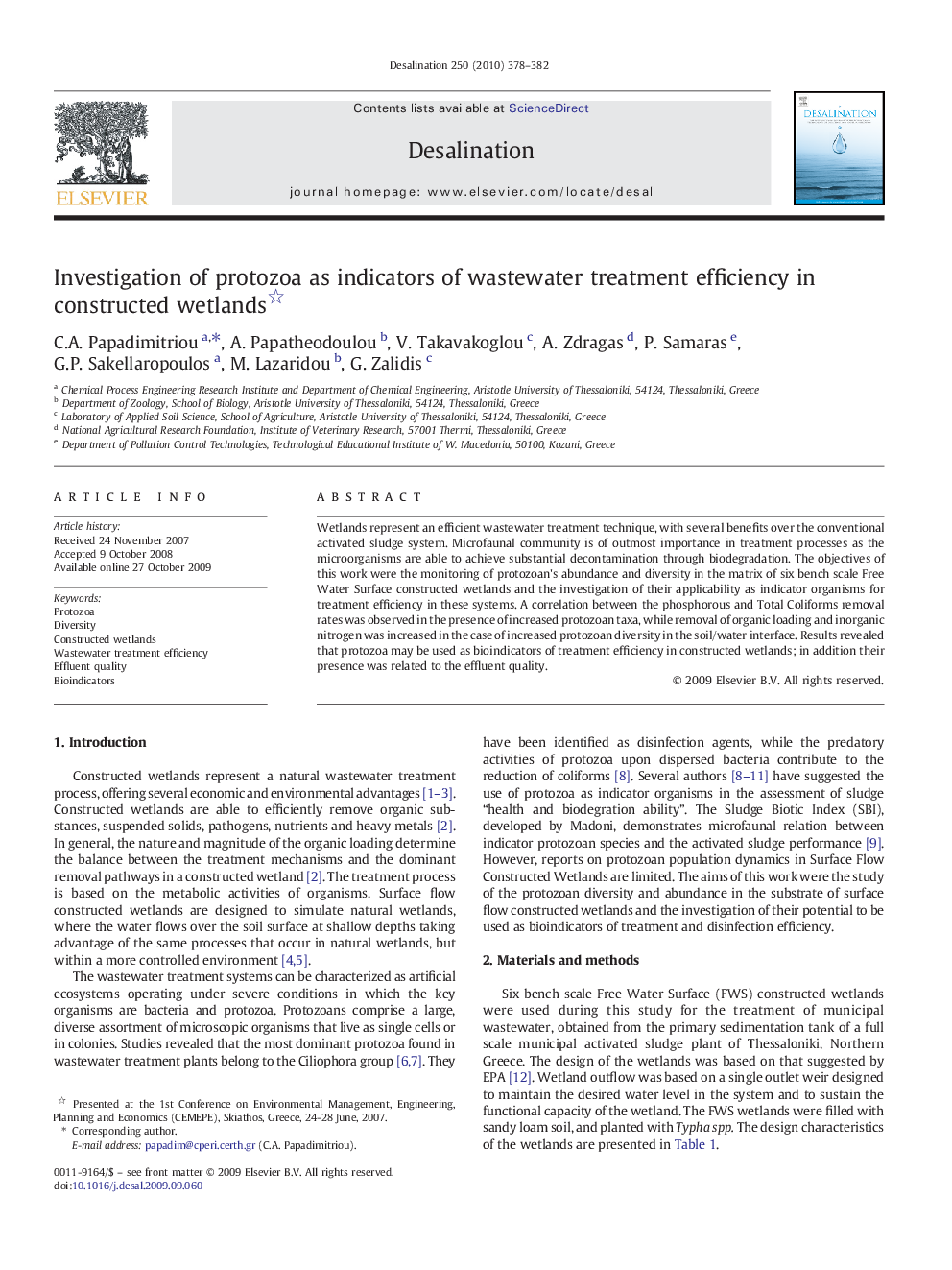| Article ID | Journal | Published Year | Pages | File Type |
|---|---|---|---|---|
| 10386156 | Desalination | 2010 | 5 Pages |
Abstract
Wetlands represent an efficient wastewater treatment technique, with several benefits over the conventional activated sludge system. Microfaunal community is of outmost importance in treatment processes as the microorganisms are able to achieve substantial decontamination through biodegradation. The objectives of this work were the monitoring of protozoan's abundance and diversity in the matrix of six bench scale Free Water Surface constructed wetlands and the investigation of their applicability as indicator organisms for treatment efficiency in these systems. A correlation between the phosphorous and Total Coliforms removal rates was observed in the presence of increased protozoan taxa, while removal of organic loading and inorganic nitrogen was increased in the case of increased protozoan diversity in the soil/water interface. Results revealed that protozoa may be used as bioindicators of treatment efficiency in constructed wetlands; in addition their presence was related to the effluent quality.
Related Topics
Physical Sciences and Engineering
Chemical Engineering
Filtration and Separation
Authors
C.A. Papadimitriou, A. Papatheodoulou, V. Takavakoglou, A. Zdragas, P. Samaras, G.P. Sakellaropoulos, M. Lazaridou, G. Zalidis,
